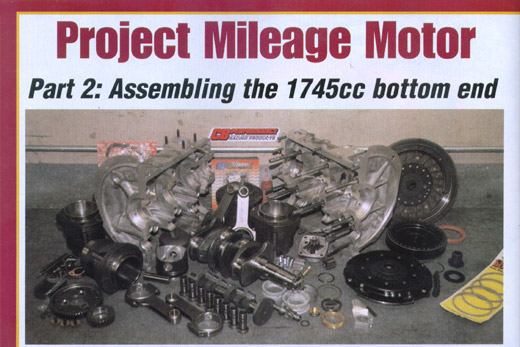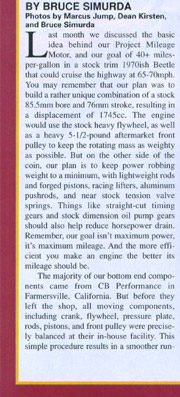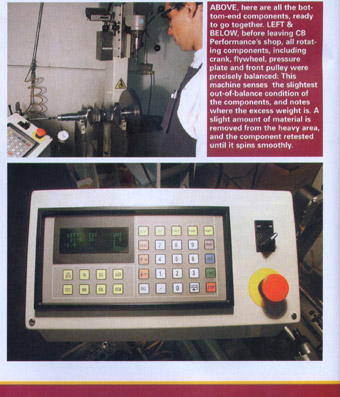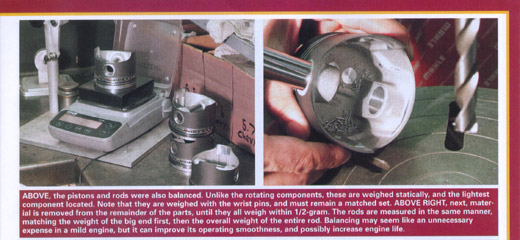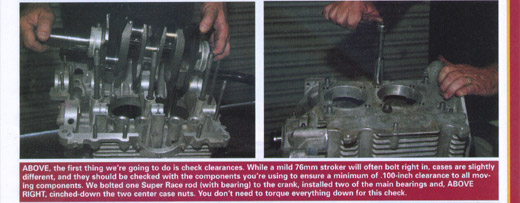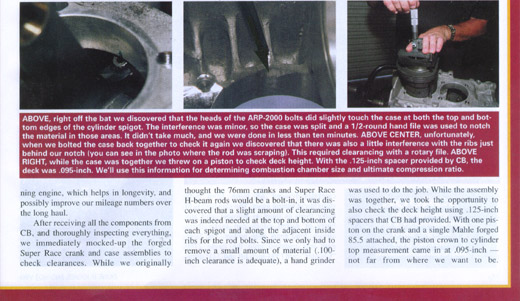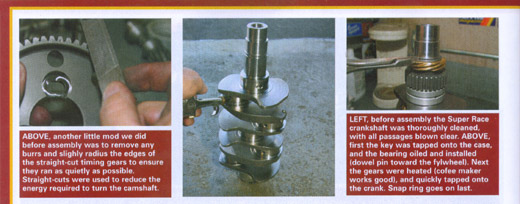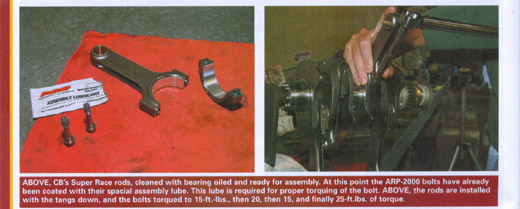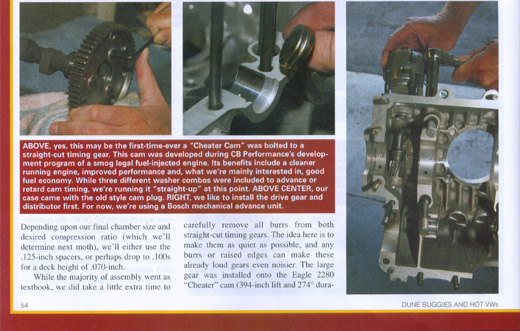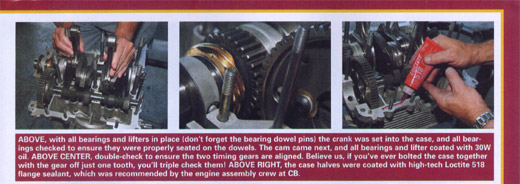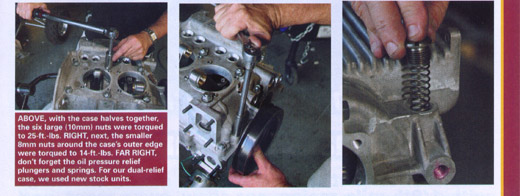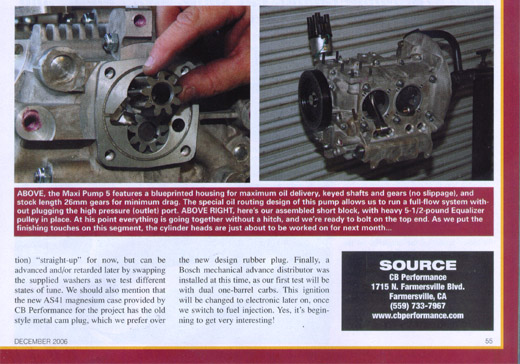|
Hot VWs - December 2006 - Project Mileage Motor - Part 2 Assembling the 1745cc bottom end
Project
Mileage Motor BY BRUCE SIMURDA Last month we discussed the basic idea behind our Project Mileage Motor, and our goal of 40+ miles-per-gallon in a stock trim 1970ish Beetle that could cruise the highway at 65-70 mph. You may remember that our plan was to build a rather unique combination of a stock 85.5mm bore and 76mm stroke, resulting in a displacement of 1745cc. The engine would use the stock heavy flywheel, as well as a heavy 5 1/2 pound aftermarket front pulley to keep the rotating mass as weighty as possible. But on the other side of the coin, our plan is to keep power robbing weight to a minimum, with lightweight rods and forged pistons, racing lifters, aluminum pushrods, and near stock tension valve springs. Things like straight-cut timing gears and stock dimension oil pump gears should also help reduce horsepower drain. Remember, our goal isn't maximum power, it's maximum mileage. And the more efficient you make an engine the better its mileage should be. The majority of our bottom end components came from CB Performance in Farmersville, California. But before they left the shop, all moving components, including crank, flywheel, pressure plate, rods, pistons, and front pulley were precisely balanced at their in-house facility. This simple procedure results in a smoother running engine, which helps in longevity, and possibly improve our mileage numbers over the long haul. After receiving all the components from CB, and thoroughly inspecting everything, we immediately mocked-up the forged Super Race crank and case assemblies to check clearances. While we originally thought the 76mm cranks and Super Race H-beam rods would be a bolt-in, it was discovered that a slight amount of clearancing was indeed needed at the top and bottom of each spigot and along the adjacent inside ribs for the rod bolts. Since we only had to remove a small amount of material (.100-inch clearance is adequate), a hand grinder was used to do the job. While the assembly was together, we took the opportunity to also check the deck height using .125 inch spacers that CB has provided. With one piston on the crank and a single Mahle forged 85.5 attached, the piston crown to cylinder top measurement came in at .095-inch - not far from where we want to be. Depending upon our final chamber size and desired compression ratio (which we'll determine next month), we'll either use the .125-inch spacers, or perhaps drop to .100s for a deck height of .070-inch. While the majority of assembly went as textbook, we did take a little extra time to carefully remove all burrs from both straight-cut timing gears. The idea here is to make them as quiet as possible, and any burrs or raised edges can make these already loud gears even noisier. The large gear was installed onto the Eagle 2280 "Cheater" cam (394-inch lift and 274 degree duration) "straight-up" for now, but can be advanced and/or retarded later by swapping the supplied washers as we test different states of tune. We should also mention that the new AS41 magnesium case provided by CB Performance for the project has the old style metal cam plug, which we prefer over the new design rubber plug. Finally, a Bosch mechanical advance distributor was installed at this time, as our first test will be with dual one-barrel carbs. This ignition will be changed to electronic later on, once we switch to fuel injection. Yes, it's beginning to get very interesting! |
|||||||||||||
